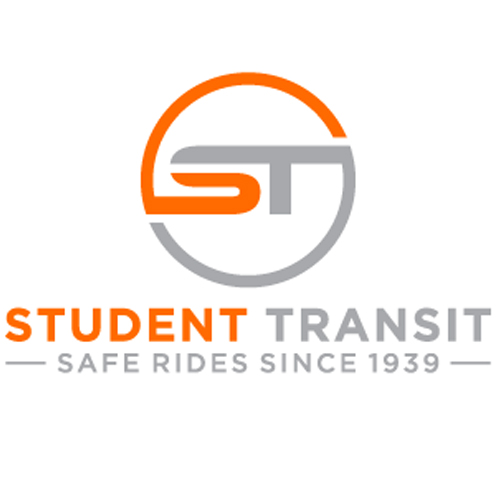BYTECURVE RESOURCES
School Bus Driver Shortage Management: How Technology Helps Districts Do More with Less
Our School Bus Operating platform arms your team with the information they need to improve decision making around safety, reducing costs, and being more efficient each day.
Trusted by dozens of public and private student transportation fleets to improve how they do business.

School districts nationwide are feeling the impact of the ongoing school bus driver shortage, with 91% reporting severe driver shortages, forcing 60% to eliminate or reduce bus routes, and leaving 79% of parents scrambling to drive their children to school themselves. For transportation directors overseeing hundreds of routes across dozens of schools, this isn’t just a staffing issue—it’s a daily operational crisis that affects everything from student safety, parent satisfaction, and district budgets. When you’re juggling double runs, combining routes, and answering angry calls from parents whose children missed first period, something has to change.
The school bus driver shortage has evolved from a temporary pandemic disruption into a persistent challenge that demands new solutions. Districts can no longer simply “wait it out” or hope that higher wages alone will solve the problem. As of September 2024, there were 12.2% fewer school bus drivers on the road compared to September 2019, and the gap continues to widen. To keep buses running and students on schedule, transportation leaders need smart, sustainable solutions; ones that combine efficient operations, driver retention strategies, and modern technology.
Below, we’ll explore how forward-thinking school districts are adapting to this new reality. You’ll learn proven ways to make the most of your existing driver workforce, cut administrative headaches, and keep service reliable even when you’re short-staffed. We’ll share real-world examples of districts across North America that are turning the driver shortage challenge into an opportunity to build stronger, more efficient transportation operations.

Understanding the School Bus Driver Shortage Crisis
The school bus driver shortage represents one of the most significant operational challenges facing school transportation today. This isn’t a simple hiring problem that can be solved with a few job postings, it’s a complex issue rooted in compensation, working conditions, demographics, and changing workforce expectations.
The typical school bus driver earned just $20.00 per hour in 2022, which is 16.8% less than the median wage for all workers. More challenging still, most bus drivers work only 32 hours per week during the school year, with unpaid summers and split shifts that make it difficult to support a family. These economic realities make recruitment difficult and retention even harder. When experienced drivers leave for full-time positions with consistent hours and better benefits, districts lose not just staff but institutional knowledge about routes, students, and community dynamics.
The school bus driver shortage touches every aspect of school transportation operations. Districts are forced to combine routes, run buses late, and, in some cases, eliminate service for specific areas. Students arrive late to class, miss breakfast programs, and experience longer rides on overcrowded buses. Parents adjust work schedules, decline job opportunities, or quit altogether to transport their children. In Hawaii, suspending around 150 bus routes due to driver shortages has impacted local businesses, with one company reporting 20% of their staff missing work to transport children.
Current industry trends show the shortage is evolving rather than resolving. While some districts have seen small improvements in driver recruitment, retention remains the biggest challenge. Transportation directors who successfully hired drivers last fall are now struggling to keep them through the school year. The focus has shifted from simply filling positions to creating work environments where drivers want to stay long-term. That means addressing not just pay but also scheduling flexibility, administrative workload, communication tools, and workplace culture.
“The calls, complaints, and headaches that were typical with the previous system have been essentially eliminated.”
How Technology Improves Operations During Driver Shortages
Real-Time Visibility Prevents Small Problems from Becoming Crises
When you’re short on drivers, you can’t afford surprises. Modern GPS fleet integration connects your routing software with real-time location data, giving dispatchers immediate visibility into exactly where every bus is and whether routes are running on schedule. This 360-degree view of operations means you catch problems early, such as a bus running behind schedule, a driver who didn’t check in, or a route that’s going to miss a critical pickup time. Transportation directors report that real-time monitoring reduces panicked parent calls by 40% because they can proactively communicate delays rather than reactively explaining why a bus never showed up.
Automated Scheduling Eliminates Hours of Manual Work
“It feels like every time we have an issue, they’re on it for a few minutes, and we’re in a better place,” reports one transportation staff member about modern dispatch systems.
Scheduling and dispatch solutions automate the time-consuming work of driver assignments, route optimization, and daily schedule management. Instead of spending hours manually updating spreadsheets and making phone calls when a driver calls in sick, dispatchers can reassign routes with a few clicks. The system automatically identifies which drivers are available, which routes can be combined, and which backup plans make the most operational sense. Districts report saving 10-15 hours per week on scheduling tasks alone, which is time that can be redirected to driver recruitment, training, or supporting students with special needs.
Mobile Communication Keeps Drivers Connected and Informed
Driver communication tools like mobile apps have transformed how transportation departments manage their workforce during shortages. Instead of playing phone tag with drivers about schedule changes, route adjustments, or last-minute assignments, dispatchers can send instant notifications that drivers receive on their smartphones. Modern driver communication platforms allow two-way messaging, digital document access, and real-time schedule updates that drivers can view before they even leave home. This reduces miscommunication, eliminates the “I never got the message” excuses, and makes drivers feel more connected to the team even during chaotic shortage periods.
Accurate Time Tracking and Payroll Reduce Driver Turnover
“In just that one example, Bytecurve paid for itself about three times over,” says Tim Purvis, Transportation Director at Poway Unified School District, referring to payroll accuracy improvements.
When you’re desperately trying to retain every driver you have, payroll errors are unacceptable. Automated time management and payroll integration ensure drivers get paid correctly for every hour worked, including overtime during driver shortage emergencies. Drivers can clock in and out digitally, review their hours in real-time, and trust that their paycheck will be accurate. This might seem like a small thing, but for drivers earning $20 per hour working split shifts, every dollar matters. Districts that implement accurate automated payroll systems report measurably improved driver satisfaction and reduced turnover.
Data Analytics Reveal Opportunities for Route Optimization
Analytics and reporting tools help transportation directors make smarter decisions about route structure, timing, and resource allocation during driver shortages. Instead of guessing which routes should be combined or which time windows create the most stress, you can analyze actual data about on-time performance, route duration, and driver utilization. One mid-sized district discovered through data analysis that they could eliminate three routes entirely by adjusting bell times at two schools and combining stops in overlapping neighborhoods. This kind of strategic optimization only becomes possible when you have clear metrics about how your transportation system actually operates rather than how you think it operates.

Implementing Driver Shortage Management Strategies in Your Transportation Department
Getting Started: Audit Your Current Operations
Before implementing new technology or changing processes, you need a clear picture of your current state. Conduct an honest assessment of how many drivers you have, how many you need, where your biggest gaps exist, and which routes are most vulnerable to disruption. Map out your backup plans (or lack thereof) for common scenarios like three drivers calling in sick on the same morning. Interview your dispatchers about their biggest time-wasters and frustrations. Talk to drivers about what would make their jobs easier and why colleagues have left. This assessment creates your baseline for measuring improvement and helps you prioritize which problems to solve first.
Many transportation directors discover during this audit that they’ve been making the shortage worse through inefficient processes. You might find that you’re assigning drivers to routes that waste 30 minutes of idle time, that your communication process requires five phone calls to accomplish what one text message could handle, or that your longest-tenured drivers are burning out because you keep giving them the hardest routes. These insights are gold when you’re planning operational improvements.
Best Practices for Maximizing Your Driver Workforce
- Implement flexible scheduling that respects drivers’ lives. The most successful districts during shortages allow drivers input on their schedules, accommodate second jobs or family obligations, and avoid constant last-minute changes. When drivers feel their time is respected, they stay longer and recommend the job to friends.
- Automate administrative tasks that waste driver time. Drivers should spend their energy operating buses safely, not filling out paperwork, making phone calls to dispatch, or trying to decipher schedule changes written on posted notices. Mobile apps, digital time tracking, and automated communication eliminate administrative friction that drives talented people away.
- Create clear backup plans for common shortage scenarios. Document exactly what happens when one driver calls in sick, when two call in sick, and when three call in sick. Identify which routes can be combined, which staff members can serve as emergency substitutes, and which partner contractors can provide backup service. Having these plans ready eliminates the 6 AM panic that creates mistakes and safety risks.
- Use data to optimize route structure continuously. Review your route performance monthly during shortage periods. Which routes consistently run late? Which combinations work smoothly? Where are you wasting resources? Adjust your route structure based on actual operational data rather than maintaining routes “because we’ve always done it that way.”
- Invest in retention as much as recruitment. Every driver you keep is one less position you need to fill. Focus on creating a supportive work environment, providing modern tools that make jobs easier, ensuring accurate payroll, and recognizing excellent performance. Districts that excel at retention report spending half as much on recruitment while maintaining better staffing levels.
Common Challenges and Realistic Solutions
One frequent challenge is resistance to technology from experienced drivers and dispatch staff. Long-time employees may feel threatened by new systems or skeptical that anything will actually improve. The solution involves these team members early in the selection and implementation process. When your most experienced dispatcher helps choose the new scheduling system and provides input on how it should work, they become advocates rather than resisters. Provide thorough training, celebrate early wins, and be patient during the adjustment period.
Another common problem is inconsistent communication during emergencies. When three drivers call in sick and dispatch is frantically reassigning routes, communication breaks down and mistakes happen. Modern dispatch command centers address this by providing a single platform where all schedule changes, driver communications, and operational updates are consolidated through a single system. Everyone sees the same real-time information, reducing confusion and ensuring parents, drivers, and school administrators stay informed.
Budget constraints often prevent districts from implementing comprehensive solutions even when they know they need them. The key is calculating the actual cost of your current shortage-related problems. Track how many hours dispatchers spend on manual scheduling, calculate payroll errors and overtime costs, estimate the value of parent and staff time lost to transportation problems, and quantify the risk of safety incidents due to rushed decision-making. Most districts discover that modern transportation management systems pay for themselves within the first year through reduced overtime, fewer payroll errors, and operational efficiency gains.
“When it was all on paper, where we were flipping through trying to figure out who’s next in line, it was easy to skip someone. busHive makes it so much easier.”
Moving Forward with Driver Shortage Management
The school bus driver shortage isn’t going away soon, but that doesn’t mean your transportation operations have to suffer. Districts across North America are proving that the right combination of technology, process improvements, and strategic thinking can maintain excellent service even with fewer drivers.
Key Takeaways:
- Real-time visibility prevents small problems from becoming crises by giving dispatchers immediate insight into fleet operations and potential issues before they affect students.
- Automated scheduling and dispatch eliminates 10-15 hours per week of manual work, allowing staff to focus on strategic priorities rather than administrative tasks.
- Mobile driver communication reduces miscommunication and improves job satisfaction by keeping drivers connected and informed without endless phone calls.
- Accurate automated payroll improves driver retention by ensuring drivers trust they’ll be paid correctly for every hour worked.
- Data-driven route optimization reveals opportunities to do more with less by identifying inefficiencies and optimization opportunities you couldn’t see before.
Modern comprehensive platforms like Bytecurve360 integrate all these capabilities into a single system that connects your routing software, GPS tracking, and payroll systems. This gives transportation directors the real-time command and control needed to manage driver shortages effectively while maintaining safety and service quality.
Transportation directors across North America are transforming how they manage operations during the ongoing driver shortage. They’re spending less time on manual scheduling and emergency problem-solving, and more time on strategic initiatives that improve service. Their drivers feel more supported with better communication tools and accurate payroll. Their communities experience more reliable transportation, even with smaller teams.
Bytecurve360 connects your routing software, GPS tracking, and payroll systems into one comprehensive platform, giving you the real-time visibility and command center capabilities needed to optimize operations during driver shortages. Book a demo to see how transportation departments are transforming their daily dispatch operations and doing more with less. Contact us today to learn how Bytecurve360 can help your district overcome the challenges of the school bus driver shortage and improve operational efficiency.
Frequently Asked Questions
How does technology help transportation departments manage driver shortages without hiring more drivers?
Modern transportation management platforms help departments maximize their existing workforce through automated scheduling that reduces manual work, real-time GPS integration that provides immediate visibility into operations, mobile communication that eliminates phone tag with drivers, and data analytics that reveal route optimization opportunities. These tools allow dispatchers to accomplish in minutes what previously took hours, letting smaller teams manage the same operational complexity more efficiently while reducing stress and improving service quality.
What's the ROI of implementing driver shortage management technology?
Most districts see measurable ROI within the first year through several channels. Automated scheduling typically saves 10-15 hours per week in dispatcher time, worth approximately $15,000-$20,000 annually. Accurate payroll systems eliminate errors that cost districts an average of $150,000 per month. Route optimization through data analytics often reveals opportunities to eliminate routes or reduce overtime, saving $50,000-$100,000 annually. Districts like Poway Unified School District report that their transportation management system “paid for itself about three times over” through operational efficiencies and cost reductions.
Can these solutions integrate with our existing routing software and GPS systems?
Yes, modern platforms like Bytecurve360 are designed to integrate with the routing and GPS systems you already use rather than requiring you to replace everything. The platform connects data from multiple systems—routing, GPS tracking, payroll, and time management—into one comprehensive view. This means you keep the routing software your planners know and love while gaining real-time operational control, better communication tools, and automated workflows that weren’t possible before.
How long does it take to implement transportation management technology during a driver shortage crisis?
Implementation timelines vary based on district size and system complexity, but most districts can begin seeing operational benefits within 4-8 weeks. The key is starting with high-impact features first—typically real-time GPS integration and mobile driver communication—so dispatchers gain immediate relief from daily chaos. More comprehensive features like full payroll integration and advanced analytics can be phased in over several months while you’re already benefiting from core functionality. The best vendors provide implementation support and training to ensure your team succeeds even during the stressful shortage period.
What kind of training do dispatchers and drivers need to use these new systems effectively?
Most modern transportation management systems are designed to be intuitive since vendors know you’re implementing during challenging times when training bandwidth is limited. Dispatchers typically need 2-4 hours of initial training on core features plus ongoing support during the first few weeks. Drivers need even less—usually 30-60 minutes on mobile app basics since the apps are designed to work like consumer apps they already use. The best approach is training a few power users first who can then support their colleagues, combined with vendor-provided support resources like video tutorials and responsive help desk access.







